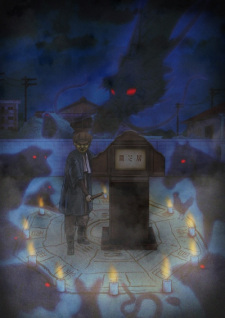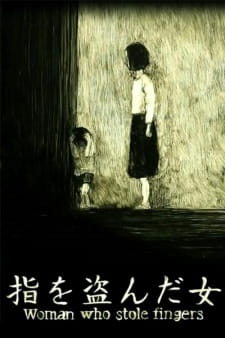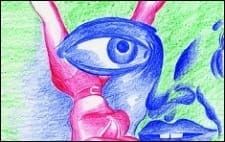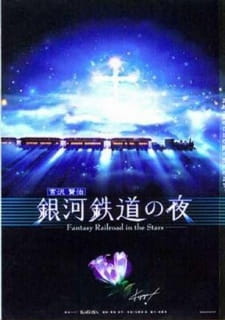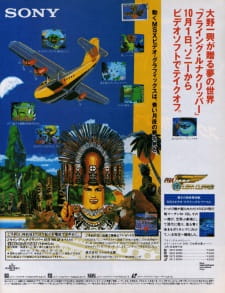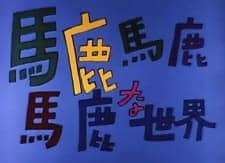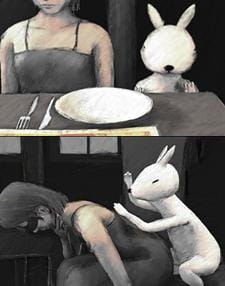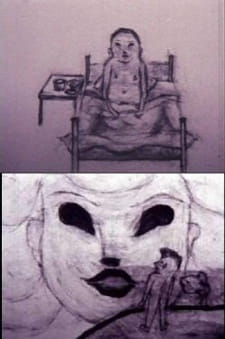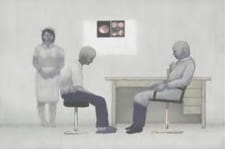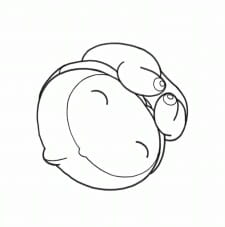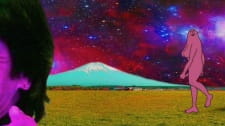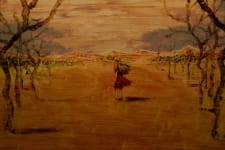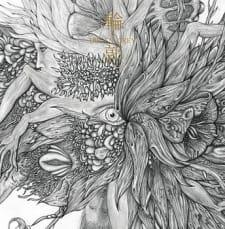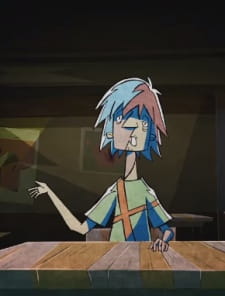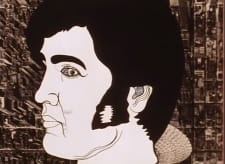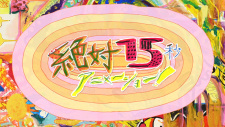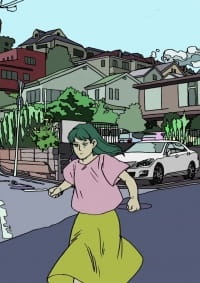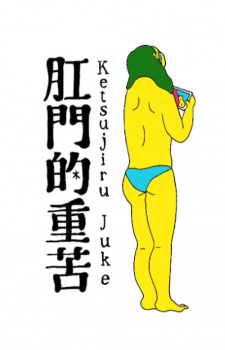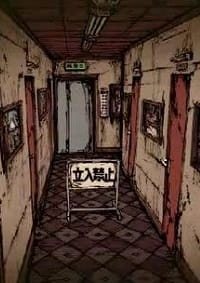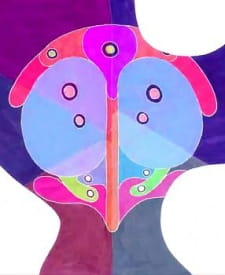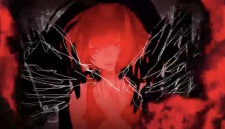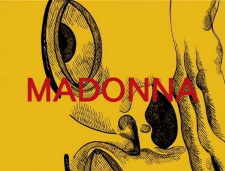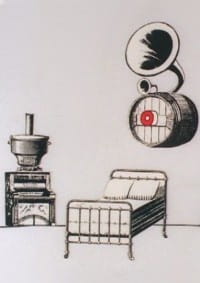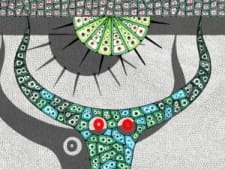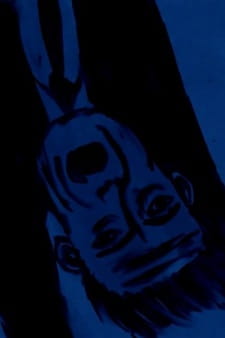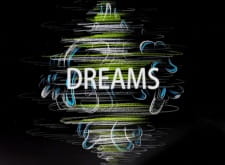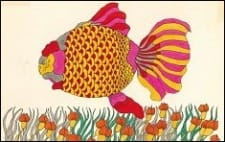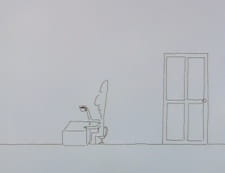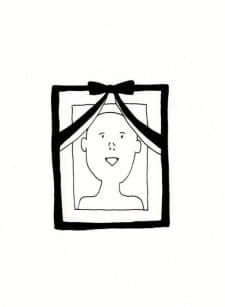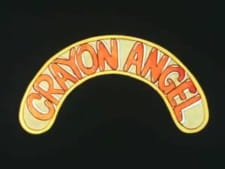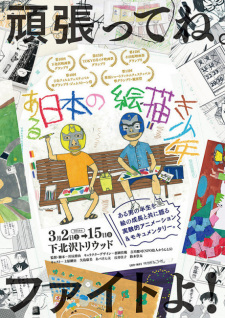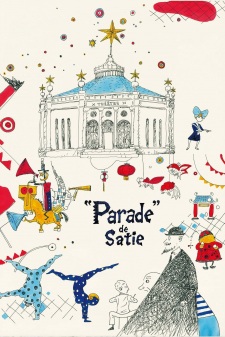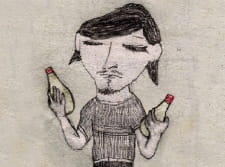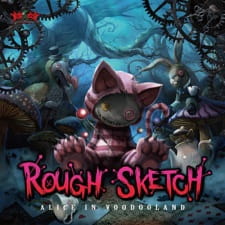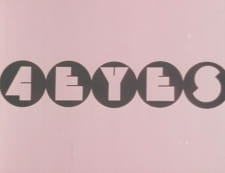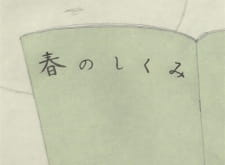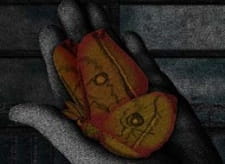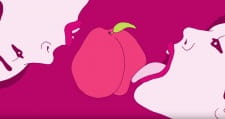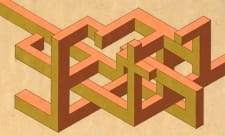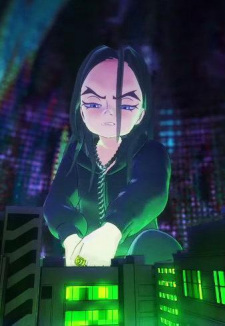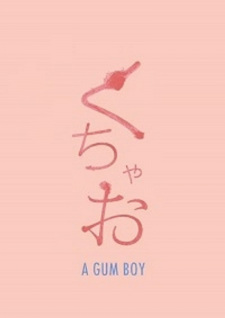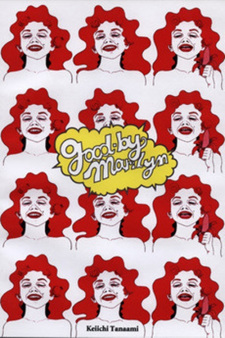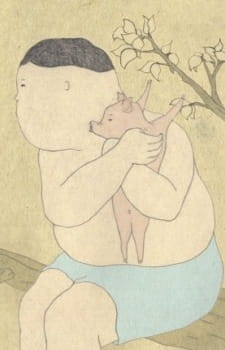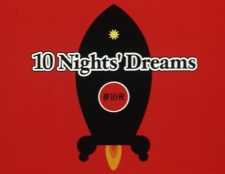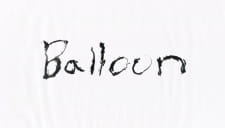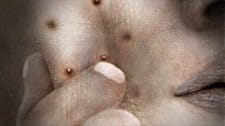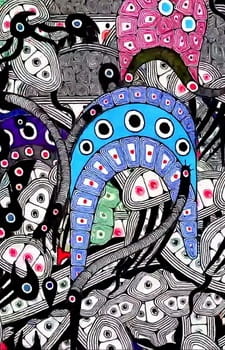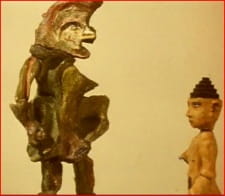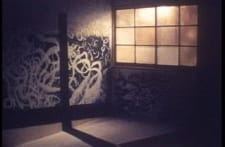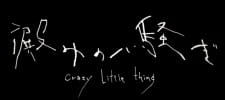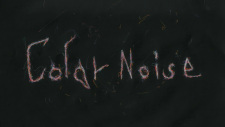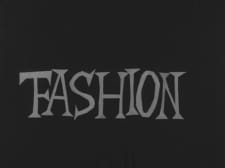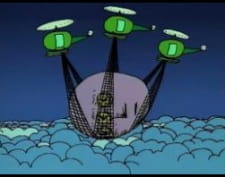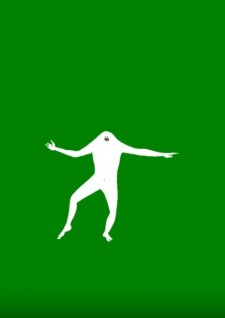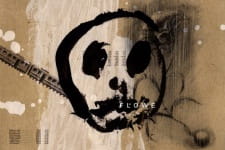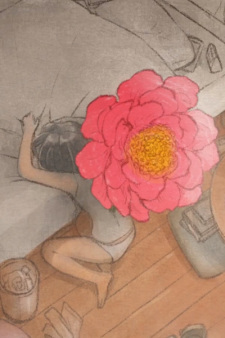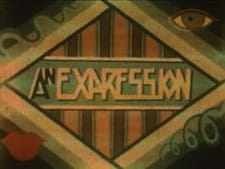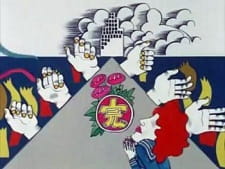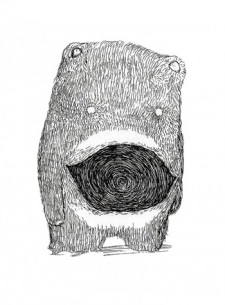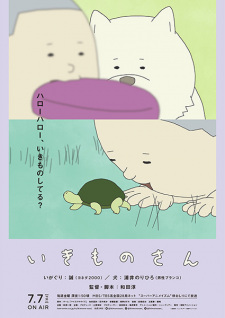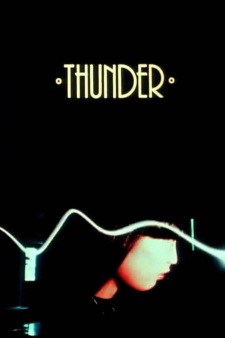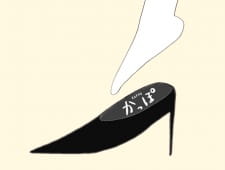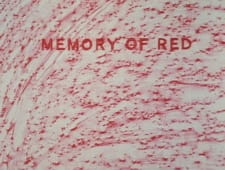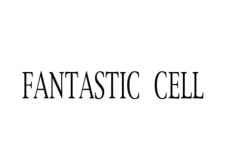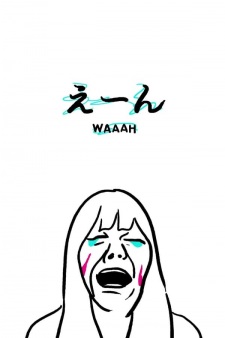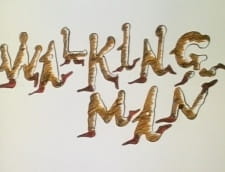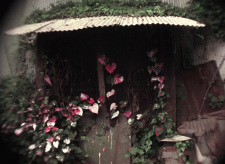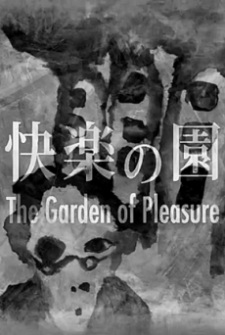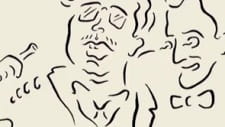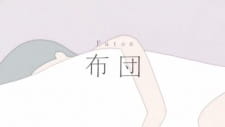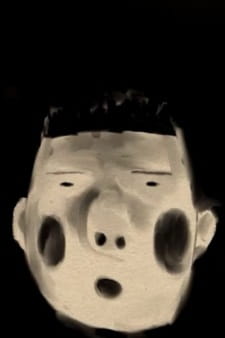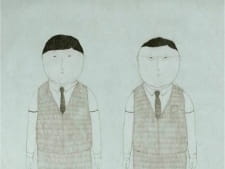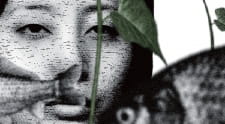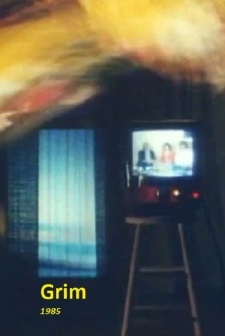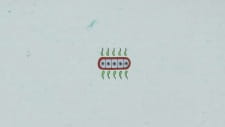- All
- Not In My List
- Watching
- Completed
- On-Hold
- Dropped
- Plan to Watch
Members
Score
Newest
Title
Experimental fiction which shunned conventional storytelling at the time it was created. These stories often invoke unsettled feelings because they reject traditional ways in which we prefer to view (or escape from) the world. Narrative is avant garde works is often of higher importance than the content.
Deconstructions often fall into this genre. Note that simply being darker, edgier, or cynical doesn't mean the work is avant garde.
Special Friday 13th episode of Yami Shibai 9.
One day, a boy who separated from his mother’s hand is deprived of his fingers. His fingers become a larva and part from his hand. The house. . . conceals a relationship between the two from anyone. How does the boy who is deprived of his fingers grow up? (Source: TMDB)
A series of 16 "short stories" created by the creator's group Images Forum. The stories are: Tokyo Strut (Sato Masahiko, Ueta Mio) Tokyo Trip (Tanaami Keiichi) Fishing Vine (Seike Mika) Yuki-chan (Oyama Kei) Dog & Bone (Shiriagari Kotobuki) Public Convenience (Tabaimo) TOKYO (Uda Atsuko) Black Fish (Aihara Nobuhiro) Unbalance (Ito Takashi) Tokyo Girl (Shimao Maho) Manipulated Man (Wada Atsushi) Nuance (Murata Tomoyasu) Hashimoto (Furukawa Taku) Funkorogashi (Kuri Yoji) Fig (Yamamura Koji) 12 O’Clock (Iwai Toshio)
(No synopsis yet.)
The Celestial Railroad is a fantastic journey of a boy, Giovanni, in a dreamscape created into a colorful full-dome CG animation picture with inspiring background music. Based on a story written in the early 20th century, KAGAYA, a digital fine artist, has breathed new life into the unique imaginary world using creativity and precise astronomical knowledge. The starry sky is depicted as the Celestial Field made up of a river, a field of silver grasses, flowers, birds, survey towers, railway signals and more. Across this amazing beautiful scenery, the Celestial Railroad runs along the Milky Way.
A trip on a chartered plane with a number of other thrill-seekers (most of whom are anthropomorphic fruits and vegetables) and hop from island to island, each of which offer their own unique visual delights. (Source: IMDB)
An absurd film by Kuri Youji.
Plot Synopsis : Trilogy about clouds, that is, an omnibus movie consisting of three different stories of clouds. It is based on a charcoal drawing. The clouds without the fixed form are the worlds which surround us. 1 "Breathing Cloud" 3min 10sec People’s body and soul transform into big a cloud, and are mixed with erotic shapes. 2 "Looking At A Cloud." 5min 45sec Something happens at the junior high school. When a boy starts to draw a cloud, that drawing begin to move and eat the students... 3 "From The Cloud" 3min 50sec A funny little story about people living on the soft cloud. A look at their daily life, in the morning, they listen to the bell and begin to go down the sky.
Tetsuji Kurashige's nightmarish U-SA-GUI (2002) begins by citing a section from Brillat-Savarin's 1825 treatise, The Physiology of Taste, in which the renowned French epicure suggests that stimulating foods, meats in particular, can have an influence on one's dreams. The film depicts a macabre game played by two rabbits and a blindfolded woman. The rabbits face each other over an old-fashioned illustrated board game. When they land on a square, the woman must eat the food indicated in the illustration. If she has chosen correctly, a die pops out of her mouth and lands on the floor giving the rabbits their next move. (Source: Midnight Eye)
"Yoru no Okite" takes us to the sky (or to hell) to accompany the delirium of a man who is assassinated. A different take on a spirit who is adrift after being murdered. This restless spirit takes us on a surreal journey through death, the after life, and back to the land of the living again.
Short experimental film from 1967 from animator Yoji Kuri.
In Kei Oyama's grim Consultation Room, a medical diagnosis triggers a wave of traumatic fantasies, portrayed in greyish pencil drawings that waver as if left out for too long in the rain. (Source: Sydney Morning Herald)
Short animation by Mirai Mizue.
Short animation by Sawako Kabuki.
Short animation by Ryu Kato.
An abstract work by Keichii Tanaami.
A surrealistic short from minimalist cartoonist Kuri Yoji.
Following the release of their 8th album "DUM SPIRO SPERO," Japanese rock band Dir en Grey went into hiatus following a vigorous touring schedule in Japan and abroad, a year and a half later returning with their single "RINKAKU" released on December 19th, 2012. Once again animator Keita Kurosaka was enlisted to create a hand drawn music video, that in many regards is much less shocking and grotesque than the band's previous collaboration with Kurosaka, the infamous "Agitated Screams of Maggots" music video.
An independent animated music video for the song "DušaN" by the Slovakian band Saténové ruky. Kousuke Sugimoto created it for a friend who is in the band. The video is about the protagonist's soul that just won't stop "talking" when he's coked.
After a long 5-year wait, the team that created the widely acclaimed "TAMALA2010 A Punk Cat in Space" (Winner of the Jury and Public's Prize for Best Animated Feature Film in Canada's FanTasia 2003), brings you a fusion of extremely cute graphics and nice music. Also included are 3 shorts directed by Studio 4C's Hidekazu Ohara. It's a new animation world you'd want to see and listen to again and again. (Source: AniDB)
A chaotic mixture of hand-drawn animation and magazine cut-outs appropriating American pop culture. With a soundtrack involving music and sounds played in reverse, iconography of war and pop culture are intercut or merged together with images of eroticism and consumption. The film screened at the 3rd Sogetsu Animation Festival 1971. (Source: Collaborative Cataloging Japan)
An anthology work produced by the Japan Animation Association for their Into Animation 7 festival held at The National Art Center, Tokyo.
The rooftops of a darkened city, a couple walking by a lone streetlight on an otherwise darkened street, an old man rocking in a creaky chair in the corner of a room lit only by the moon or the streetlight entering through the window. (Source: Nishikata Film Review)
Naoko had a fight with her brother over a trivial thing and pushed him away. She knew she was childish but she ran away from home.
The stream of a mil, an apple flows down through the stream, where innumerable illusion of fish appears and disappears in the sky reflected in the water. (Source: Yamamura Animation)
The truth behind the well-known Grimm's Tales is cruel and full of blood and lust! Episode 1: "Hansel & Gretel": Two brothers lost in the woods were actually criminals... Episode 2: "The Blue Beard": The true character of the Blue Beard was a cannibal who was unable to tolerate his wife's adultery. Episode 3: "Cinderella": Actually Cinderella had abnormal affections toward the prince.
A story set in a world before ours. A world in chaos where forces of good and evil fight and mingle. By doing so, it creates the chance to give birth to the new world. A couple of winged beings make love and fly away. They bear a child in an egg, and when the child opens its eyes they are immediately destroyed, one consumed by fire and the other by water. Mythical, elemental and mysterious, the world created by Tsuji is dangerous, menacing and suffuse with signs of apocalypse, but somehow simultaneously tender and compassionate. A Feather Stare at the Dark captures simple gestures and primal feelings and amplifies them, realising the non-verbal and non-literal with remarkable grace.
After breaking up with my ex-boyfriend, I was heartbroken but I had to think about the theme for my next animation film. Just then I had a dream of this ex-boyfriend. This animation film is based on that dream. (Source: Vimeo)
Short film made by Michio Mihara in 2008.
RIKEN's (The Incorporated Administrative Agency Rikagaku Kenkyusho) promotional video with animation by Mirai Mizue and music by twoth.
Music video for Kikuo's Vocaloid song Aishite Aishite Aishite.
The horrible truths behind Japanese Fairy Tales from the ancient times are finally revealed! This title includes three episodes: "The Monkey and the Crab", "Click-Crack Mountain" and "Urashima and the Kingdom beneath the Sea". (Source: Official Website)
(No synopsis yet.)
A somewhat dark and surreal tale by Naoyuki Tsuji. Our protagonist sets out on a journey in a world which starts at The Gate of Confusion. To complete his travels, he must meet various strange characters to relieve himself of his burdens and set himself free.
Floating in a certain ocean is an island called "EGU Island." The sole entertainment on this island is listening to the songstress, "End of the World." Day after day, the islanders are enchanted by her singing. However, this tranquil time is shattered in an instant. Since the disappearance of the songstress, the island has been filled with "anger," "doubt," and "anxiety." Various thoughts and intentions begin to stir...A licking war unfolds around, "End of the World!" The one who holds her destiny is the legendary legacy "EGUMI Legacy." (Source: Ani-One Asia)
Short experimental animation from Yoji Kuri.
Music video for the song Trepanation by millenium parade, directed by Ryoji Yamada.
In this story, the kids are constantly forced to bury themselves into their endless homework by those giant monsters behind them. The children's brains are filled with water that can be heated by tension. If a kid is overstressed, the water in their brain would boil and produce steam, which becomes the food of the greedy monsters and the energy of the whole city. Thus, those poor children repeat their lives day after day, serving as the powerplant of their world, spending their childhood in tragic misery...
The story of Adam and Eve with jazzy music. Short experimental animation without words.
A horror spin on the classic tale of "The Little Match Girl".
Abstract animation by Keiichi Tanaami and Nobuhiro Aihara.
An animation mixing hand-drawn and cut-out techniques depicting the daily rituals of weekday morning that is occasionally interrupted by flights of fantasy delivered in stroboscopic flashes. Showing scenes of brushing teeth and face washing, Tanaami describes the film to be like a self-portrait on his favorite day of the week. (Source: Collaborative Cataloging Japan)
Some say that Japanese drum bridges serve as a channel between two worlds—the living realm and the afterlife. To answer the ancient question of what exactly transpires at the eternal crossing point, psychedelic twists and abstract visuals explore the legendary chaos that ensues at the enigmatic border between the mundane and the divine. [Written by MAL Rewrite]
People often consume caffeine to improve their mood, but for one salaryman, it is like a rocket ship blasting him off—away from the monotony of his desk to a world full of color, inspiration, and life. [Written by MAL Rewrite]
Short animation by Sawako Kabuki.
In Crayon Angel, Tanaami recalls his childhood memories of wartime Japan during the Second World War. The animation mixes wartime footage, family photographs and pop imagery, much of which is seen through fusuma-like grids that cut apart the image and distance it from the viewer. The soundtrack includes a haunting heartbeat, sounds of sirens and Robert Plant’s moans. The title refers to a campaign ran during the war by a confectionary company that asked children to submit crayon drawings of their brand icon, an angel, which had a profound emotional impact on Tanaami as a child. (Source: Collaborative Cataloging Japan)
An animated short film that depicts, through experimental methods, the first half of the life of a man who aspires to be a manga artist. The central character, Shinji, is a boy who loves to draw. In elementary school, he encounters Masaru, a strange young boy who also loves drawing, but who draws only masked wrestlers. The two become friends. As they progress through their elementary school grades, however, they gradually grow apart. Years later, Shinji still remains true to his dream of becoming a manga artist, and goes on to study art at the university. When his work is selected for a Best Young Artist Award, he decides to move to Tokyo and soon gets his first breakthrough. What awaits him there, though, is something completely different from the manga artist’s life that he had imagined. One day, for the first time in years, the 30-year-old Shinji comes across some work of his old friend Masaru, who has remained true to his drawing style. The story is a mockumentary ("mock documentary"), and the narration is interspersed with monologues by Shinji's mother. As the central character grows, the animation style evolves from juvenile drawings doodled on random pieces of paper to sketches drawn on specialized manga paper, thus visualizing the flow of time. (Source: Japan Media Arts Festival)
Three short films by the Japanese avant-garde illustrator and animator. Regarded (unfairly) as the Japanese equivalent of Andy Warhol, these films showcase a distinctively commercial illustration look reminiscent of the current pop art movement of that decade (1960s).
A Parade for three managers and four performers. (Source: Yamamura Animation)
Backed by an ode John Lennon penned himself, the relationship between him and his wife, Yoko Ono, is beautifully depicted. Alongside their romance, '60s-appropriate psychedelic imagery and various allusions to Lennon's contributions to the Beatles are interlaced within. [Written by MAL Rewrite]
Everything is liquid in this world, like the mayonnaise. (Source: Official website)
Music video by Kousuke Sugimoto for the title track Alice In Voodooland by RoughSketch and featuring Aikapin.
An experimental film by mareykrap about the color blue. Blue pigment in the natural world is very rare. Instead, what we typically observe is the reflection of blue light waves. How much "true blue" really exists in our world? A series of blue images. Or are they?
The human eye, a well-known motif in psychedelic culture, is duplicated and intensified in this cinematic trip. Drawing from his experiences designing discotheques, Tanaami presents two prints of the same film in double projection with a time delay ––one projected a few seconds earlier than the other–– to suggest the mind slipping out of consciousness. (Source: Collaborative Cataloging Japan)
Short film by Atsushi Wada about Spring.
A Place Where There Are Moths depicts the conflict between drab concrete block apartment living and the natural environment in Japanese cities. The forces of nature are represented by the motif of a tree whose leaves metamorphose into orange moths and take over a middle-aged woman's apartment, pushing her room higher and higher within the building. (Source: Midnight Eye)
An animated bumper from MTV Japan.
Minimalistic abstract hand made animation from the award winning Mirai Mizue.
A myriad of shadows resembling humans, animals and bacteria constantly move and merge with each other, while piano music plays in the background. (Source: AniDB)
A new official music video for American singer and songwriter Billie Eilish's song "you should see me in a crown" animated by Takashi Murakami. The music video was available for purchase on iTunes Japan and US on the same day.
The primary schoolboy "Kuchao" is hated person in his class. Even if everyone fly balloons, only he doesn't part with his it. When he immediately begins to chew a bubble gum, he enter the imagination world after school. When his balloon becomes the face and begins to chew a bubble gum, it changes into various things. His imagination makes rapid progress more. Then, the bird approaches while flying and... (Source: Official website)
Animated to the song ‘Manatsu no dekigoto’ (Midsummer Happening) by Miki Hirayama, the film is a playfully erotic animation with appropriated images that include Marilyn Monroe, Mickey Mouse, Superman, Roy Lichtenstein prints and the Glico chocolate icon of a man running through the finishing line of a race. Screened at the 3rd Animation Festival at Sogetsu Art Center in the same year that Tanaami participated in the exhibition ‘Watashi no Marilyn Monroe’ (My Marilyn Monroe) at Gallery Décor, Tokyo. (Source: Collaborative Cataloging Japan)
A huge pig is lying down in front of a house. Father, mother, grandmother, six children and a dog live in the house. Everyone is aware of the huge pig, and the pig is aware of the family. But nobody knows how and what the other think. The mother doesn't understand the father… It depends what you imagine when you hear about normal family life. (Source: Fresh Film Fest Website)
Tanaami Keiichi and Aihara Nobuhiro collaborate to put together recording of their dreams.
A short animation by Yutaro Kubo.
A series of 9 animated shorts based on the Frank comics by Jim Woodring, featuring computer/CGI, traditional cel, stop-motion, and even sand painting techniques. Contributing animators and musicians include COCOA, Eri Yoshimura, Naomi Nagata, TAMAPRO/DROP, Taruto Fuyama, Masaki Maito, Kanako Kawagushi, Masaya Sakaue, Bill Frisell, Dame Darcy, and Woodring himself.
An atmospheric and dark vision of adolescence and family life.
This film is based on a very simple idea: the increasingly varied the sounds, the greater is the number of creatures... My intention in this film was to fill the screen with chaotic movements. (Source: Mirai Mizue)
Painful events become memories over time. Still. we vomit and eat again. Life is Eco. (Source: Vimeo)
Short film from animator Tsuji Naoyuki, who is known for his use of both charcoal and puppet animation. Wake Up is a dark and brooding animation epitomizing his story telling style by combining serene worlds and childlike images with darkness and nightmarish scenes.
Gestalt was shot over the course of a year in a Tokyo dormitory. Each day, Ishida would paint on the wall and photograph it using the available light from the window. The 7-minute long film, which is accompanied by haunting organ music composed by J.S. Bach, consists of those several seconds of film Ishida shot daily. (Source: Midnight Eye)
The two of them, all alone at home. All alone with her father's corpse. Memories, ideals, and reality all sink beneath the muck. Everyone is alone. Everyone is in solitude. (Source: Geidai Animation)
Short animation by Yutaro Kubo.
Experimental anime from animation pioneer Yoji Kuri from 1960.
A music video by Koji Yamamura.
Music video for Southpaw by Kuricorder Quartet.
Short animation by Ryu Kato.
Film by Takashi Ito.
How long has it been since she lost control of her body? She is completely tapped out and finds herself wishing that she could just shed her body. (Source: Geidai Animation)
Symbolized an urban man with a triangle figure, a country woman with a circle, and represented the encounter between the two by movement. Director Shigenji Ogino tried to naturally color the movie via the kinema color technique. Due to being an early work, the technique isn't smooth. Because of this the film has a photosensitive epileptic seizure warning as there are high frequency flashes of red and green frames for the duration of the entire film. Please be careful while viewing.
An erotic animation made for the late-night television program 11PM with a reference to Marcel Duchamp’s work of the same title. (Source: Collaborative Cataloging Japan)
Anthology produced by Adobe Creative Cloud's Japan division to promote their software suite. It showcases the talents of various Japanese experimental animators.
A new series of anime shorts based on Atsushi Wada's original short film and game My Exercise. (Source: ANN)
Film by Takashi Ito.
Legs and shoes float across the screen in this short film by Yoriko Mizushiri.
A short animation by Nobuhiro Aihara.
Mirai Mizue's debut animation short film.
Crying is an act often associated with infancy, but that does not mean adults do not share the urge to mewl. Whether it be for love, sadness, excitement, fear, relief, or disgust, everyone has an inner-infant that wants to let out their emotions once in a while. [Written by MAL Rewrite]
Four short vignettes in this early animated film. In the first, shadows pull away to reveal a puddle, and automobile and bicycle tires pass through it. In the second, cutout shadows of a variety of shoes of people walking are seen. The third is a flurry of geometric forms. In the fourth, the playing card spade courts the heart and pushes away the club, but eventually the club returns, beats up the spade, and wins the heart. (Source: AniDB)
Film by Tanaami Keiichi.
Set in a cave imagined as an air-raid shelter, images of the surrounding trees are painted over directly on the film. Vivid colors intermixed with the sound of wartime radio communications and bombing create a harmonious composition of documentary and animation. (Source: Collaborative Cataloging Japan)
The riveting harmonies of music may conjure images in one's mind to accompany the noises they hear. In the case of Erik Satie's composition "Trois morceaux en forme de poire," perhaps some indiscriminate geometry would be suitable. Experimental animator Masaki Okuda attempts to study the relationship between sight and sound in an abstract grayscale artwork. [Written by MAL Rewrite]
In a frenzy of dancing and dining, guests excitedly count down to the start of the ArtPath 2011 exhibition. [Written by MAL Rewrite]
A futon, a traditional Japanese mattress, as seen by Yoriko Mizushiri, becomes the vehicle of dream fantasies combining the most pleasant sensations such as the morning coffee, the warmth of bedding and a soft rice carpet under one’s feet. Lazy stretching serves as a start of sensuous, sleepy gymnastics. With a fluid movement, the passive body will turn once again from the left to the right of the mattress to dive into the fantasies of even deeper unconsciousness a little while later. (Source: Krakow Film Festival)
A horror take on the classic tale of Snow White.
Film by Takashi Ito.
Bonus short included on the "Atsushi Wada Works 2002-2010" DVD.
The dialogue in question takes place between a woman, who appears to be submerged in water, and a man who sits by a tree on sandy soil. The messages the couple sends back and forth to one another take the form of metaphor: a seed, a fish, a thorn, and so on. (Source: Midnight Eye)
Film by Takashi Ito.
A special follow up version of Mizue Mirai's Timbre A-Z.
